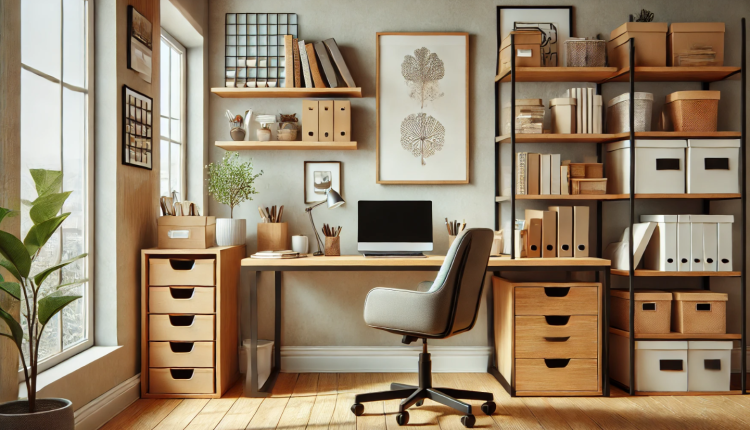Creating an Efficient Home Office: Strategies for Productivity and Organization
In today’s world, the home office has become an essential space for many individuals. Whether you’re working remotely, managing personal projects, or handling household administration, a well-organized and efficient home office can significantly impact your productivity and overall well-being. This article explores strategies to create a functional home office that fosters efficiency and organization.
Selecting the Ideal Location
Choosing the right spot for your home office is the first step toward creating an efficient workspace. Consider the following factors:
- Privacy: Select a quiet area where you can work without frequent interruptions. This could be a spare room, a secluded corner in a larger room, or even a converted closet space.
- Natural Light: Position your workspace near a window to take advantage of natural light, which can enhance mood and productivity. Ensure that the light doesn’t cause glare on your computer screen.
- Space: Ensure there’s enough room for your essential equipment and supplies, allowing you to work comfortably without feeling cramped.
Investing in Functional Furniture
The furniture you choose plays a crucial role in your comfort and efficiency. Key pieces include:
- Desk: Opt for a desk that fits your space and meets your work requirements. Consider models with built-in storage to keep essential items within reach.
- Chair: Invest in an ergonomic chair that provides proper support to prevent back and neck strain. Features like adjustable height and lumbar support are beneficial.
- Storage Solutions: Incorporate shelves, filing cabinets, or storage boxes to organize documents and supplies, reducing clutter and making items easy to locate.
Organizing Your Workspace
An organized workspace enhances focus and efficiency. Implement the following strategies:
- Declutter Regularly: Keep only necessary items on your desk to maintain a clean and organized environment. Regularly assess and remove items that are no longer needed.
- Use Organizers: Employ desk organizers, drawer dividers, and filing systems to keep supplies and documents orderly. Labeling storage areas can further streamline organization.
- Cable Management: Utilize cable organizers or clips to prevent cords from tangling and creating a messy appearance. This also reduces potential hazards.
Incorporating Technology Wisely
Technology is integral to modern workspaces. Ensure your home office is equipped with:
- Reliable Internet Connection: A stable and fast internet connection is essential for virtual meetings and online tasks. Position your workspace close to your router or consider a wired connection for stability.
- Essential Equipment: Depending on your work, this may include a computer, printer, scanner, or other specialized devices. Ensure all equipment is in good working order and meets your professional needs.
- Backup Solutions: Regularly back up important data using external drives or cloud services to prevent data loss.
Personalizing Your Space
Adding personal touches can make your home office more inviting and conducive to productivity:
- Aesthetics: Choose a color scheme and decor that you find motivating and calming. Personalize the space with artwork, plants, or other items that inspire you.
- Comfort Items: Incorporate items like a cozy rug, cushions, or a small fan/heater to adjust the temperature to your comfort.
- Inspiration Board: Create a bulletin board with goals, inspirational quotes, or reminders to keep you focused and motivated.
Managing Time and Distractions
Effective time management is vital in a home office setting. Consider these tips:
- Set a Schedule: Establish regular working hours to create a routine and maintain a work-life balance.
- Breaks: Incorporate short breaks to rest and rejuvenate, enhancing overall productivity.
- Minimize Distractions: Communicate your working hours to household members, turn off non-essential notifications, and create a quiet environment to maintain focus.
Maintaining Work-Life Balance
Separating professional and personal life can be challenging when working from home. Strategies include:
- Physical Separation: If possible, designate a specific area solely for work to create a mental distinction between work and personal space.
- End-of-Day Ritual: Develop a routine to signal the end of the workday, such as shutting down your computer and tidying your desk, to transition into personal time.
- Regular Review: Periodically assess your workspace and routines to ensure they continue to meet your needs and make adjustments as necessary.
By thoughtfully selecting your workspace, investing in functional furniture, organizing effectively, incorporating necessary technology, personalizing your environment, managing time wisely, and maintaining a clear work-life balance, you can create a home office that enhances productivity and well-being.

